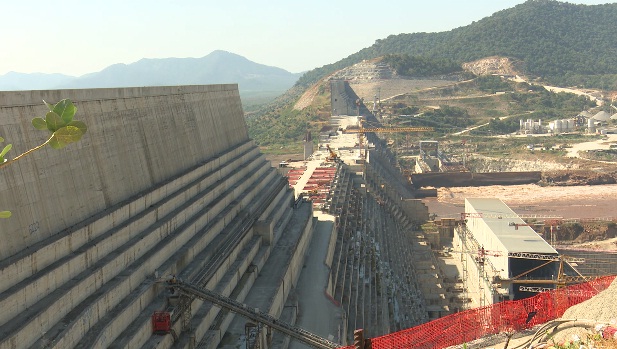Saddle Dam Face Slab Completes, Pivotal for GERD - ENA English
Saddle Dam Face Slab Completes, Pivotal for GERD

ENA November 19/2019 Saddle dam face slab completion, which is a milestone achievement of the Grand Ethiopian Renaissance Dam (GERD), will have paramount importance in accelerating the entire project, according to saddle dam Civil Construction Inspection Head.
In an exclusive interview with ENA, saddle dam Civil Construction Inspection Head Engineer Girma Mengistu said “completion of the saddle dam’s face slab will help to speed up the entire project by shifting the workers from the saddle dam to GERD.
GERD’s saddle dam face slab was completed on November 12, 2019 while status of the overall saddle dam reaches 97 percent whereby the remaining is expected in no more than a month, he added.
Girma stated the upstream face of the saddle dam is now fully completed with over 14 million meter cube concrete embankment.
The completed upstream face of the saddle dam, particularly the face slab covers an area of more than 330,000 meter square, he pointed out.
“Accomplishing the saddle dam’s face slab with all the crucial components is now ‘a milestone in attaining the services we seek from it and most importantly the way it is needed,” he elaborated.
According to him, the saddle dam is 5.2 kilometers and has an average height of 50 meters.
He added that foundation treatment had earlier been accomplished to prevent any possible underground water leakage and more than 30,000 plastic diaphragms have also been laid underground.
Girma noted that the saddle dam, constructed in an elevation of not more than 600 meters will have a pivotal contribution towards generating the planned 15,760 GWh power from GERD.
Moreover, there was significant amount of knowledge and skill transfer during the construction of the saddle dam, the Civil Construction Inspection Head stated.
Excavation and clearing of the saddle dam started right after the commencement of GERD construction while its face slab started in 2009 Ethiopian year.
A saddle dam is a supporting dam constructed to confine the reservoir created by a primary dam either to permit a higher water elevation and storage or to limit the extent of a reservoir for increased efficiency.